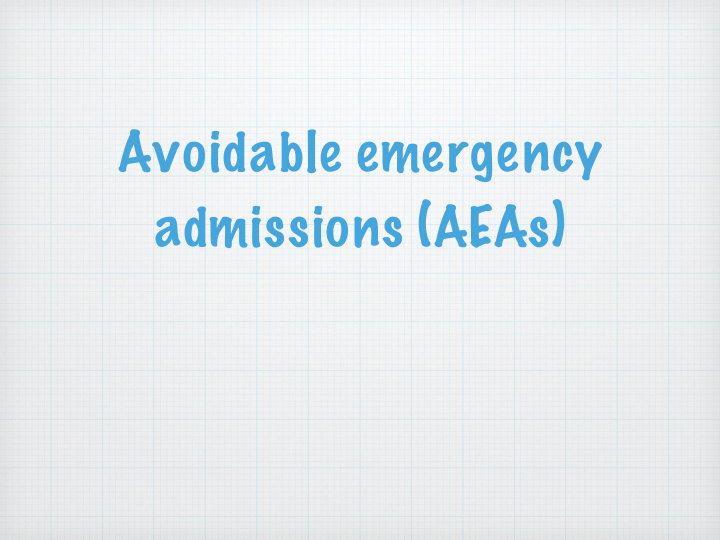



Avoidable emergency admissions (AEAs)
AEAs Ambulatory Care Sensitive Conditions (ACSC). Diagnoses for which effective care can reduce admissions. Acute conditions not usually requiring admission. 15- 20% of emergency admissions are avoidable. GP referrals account for 8.5% of all attendances (National data).
ACSCs CCF COPD Dementia AF Asthma Angina Diabetes Hypertension Convulsions Vaccine preventable Iron deficiency anaemia - Flu, pneumonia
Avoidable acute problems Pyelonephritis ENT infections UTI Convulsions Flu Perforated PU Pneumonia Cellulitis Gastroenteritis Dental conditions LRTI in children
Richmond CCG 12,300 emergency admissions (2012/13). 3rd lowest London (ACSC). 5th lowest London (Acute). 16% seem avoidable. Aim- reduce by 3.5% (479) in 2015/16.
Willie Sutton's Law 1901 - 1980 Stole from the rich...... And kept it! $2 million in career. Robbed banks because "that's where the money is. "
Kings Fund Myths A&E wait times have increased. Number going to A&E has increased. Increased A&E attendance is due to reduced GP access. A&E pressures due to inadequate staff/skill mix. Delays discharging from hospital are due to social care problems.
A&E attendances 14 million 2003 21.7 million 2013 30% of these attending WICs and minor injuries Type 1 A&E increased 12.6 million to 14.2 million (18%)
Who's fault? Patients GPs Hospitals 111 Immigrants Government Society
Table 1 List %>65 Admissions/10,000 Admissions Population >65 Rate per 10,000 pop.>65 7679 11.9 74.2 57 914 624 9492 16.2 83.2 79 1538 514 3854 10 96 37 385 960 6791 17 64.8 44 1154 381 3925 6.9 63.7 25 271 923 8959 8.9 65.9 59 797 740 2973 14.5 137.9 41 431 951 3663 11.1 54.6 20 407 492 13646 14.3 105.5 144 1951 738 8677 14.3 94.5 82 1241 661 10467 12.2 78.3 82 1277 642 3944 14.6 91.3 36 576 625 2031 22.2 157.6 32 451 710 2043 18.2 122.4 25 372 673
Risk factors Age • 0-4 years • Over 65 years (14% of population but 57% of admissions. Frailty Comorbidity (50% admissions have 8+) Variation in practices
Total Condition Lowest Highest admissions UTI 407 7 .3 50.5 Flu & 308 4.5 30.3 pneumonia Gastro + 197 0 17 .3 dehydration COPD 146 2.3 39.4 AF 123 1.3 13.4 ENT 111 1.3 11.2 infection
What causes avoidable A&E admissions?
How could we reduce avoidable A&E admissions?
What doesn't work? WICs and minor injury units Community matrons
What works?
COPD Pathway and EOLC (2009- 2013 2 hr rapid response community service Winter warmth campaign Increased diagnosis (1833- 1976) Emergency admissions 275 to 233.
Since implementation of the End of Life Care Strategy in 2008, the percentage of deaths in hospital has decreased 100% 75% Percentage Home or care home Hospital 50% 25% 0% Source: Primary 2008 2009 2010 2011 2012 2013 Mortality data for Richmond, 2013 Year
Emergency admissions by care homes residents • What have we done: - Care home pilot in 4 care homes providing nurse specialists working with care home staff to proactively identify patients at risk of an unplanned admission to hospital. - Other initiatives include Co-ordinate My Care; Anticipatory care planning guidance and training; Care home rapid response service; Safety Thermometer; Falls screening and management; Medicines reviews, and; Nutrition guidance • Between 2012/13 and 2013/14, emergency admissions by care home residents aged 65 years and over reduced from 476 to 444 (by 7%). Mean length of stay also reduced (from 11 days to 10 days).
Recommend
More recommend